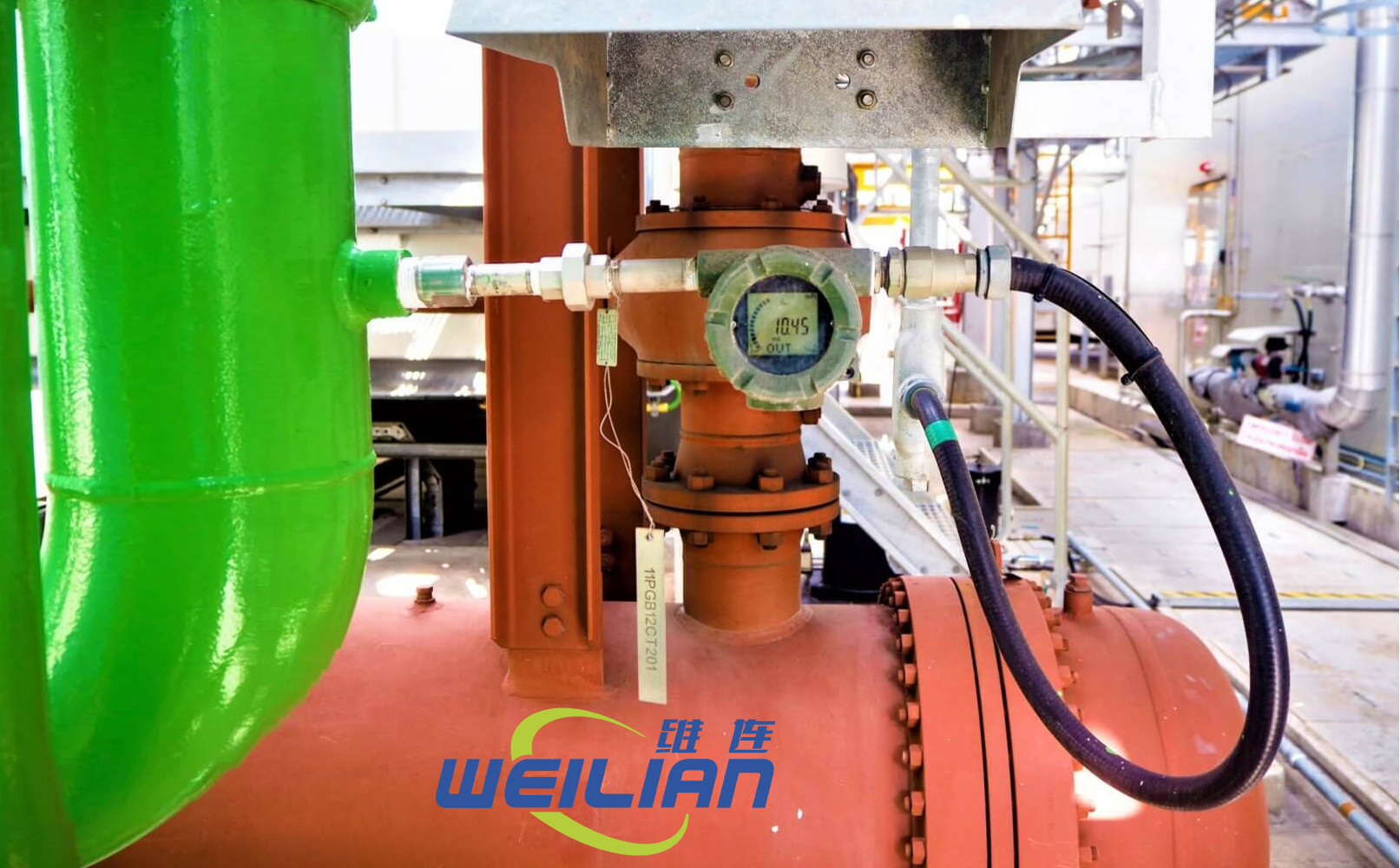
 Thermowell problems
Thermowell problems
Instrumentation engineers seeking to measure temperature by installing temperature sensors and thermowells into flowing fluid streams must perform many critical evaluations.
problem
When the fluid flows through the thermal sleeve, high pressure and low pressure eddy currents will form on both sides. These vortices separate first from one side and then from the other in an alternating pattern. This phenomenon is usually called vortex shedding.
The differential pressure caused by the alternating eddy currents will generate vortex induced vibration (VIV), which will generate stress and cause lateral and axial deflection, and eventually lead to the thermal casing rupture.
Can engineers design thermowells to avoid VIV related conditions that could lead to fatigue and failure?
The answer is yes, but only with the right tools.
The success or failure of a given thermowell in a given operating environment is related to the degree to which the VIV frequency matches the natural resonant frequency of the thermowell.
When these two values match each other, the displacement will be maximum and damage is most likely to result.
Both frequencies can be calculated using formulas created by the American Society of Mechanical Engineers (ASME).
Its current version is ASME PTC 19.3 TW-2016, which can be used to evaluate the combination of component configuration and operating parameters from four points:
Frequency limit
The resonant frequency of the thermowell must be high enough to avoid being reached during operation and the possibility of matching the VIV frequency.
Dynamic Stress Limits
The dynamic stress shall not exceed the fatigue stress limit.
Static stress limit
Steady state stresses shall not exceed stress limits.
Hydrostatic pressure limit
The external pressure shall not exceed the rating of the tip, shank or flange.
All four limits must be met in order for the thermowell design to be considered safe.
design calculation
Because there are nearly 20 variables related to process conditions and heat pipe size in ASTM formula, manual calculation is impractical.
Engineers often build formulas in spreadsheets to facilitate data retention and numerical operations.
For each case, the engineer must follow the same steps:
● Design dimension parameters
● Place it in the operating environment (it shall include a series of conditions, such as normal, startup, maximum value, gradient change, etc.)
● Create Implementation
● Test it iteratively, gradually working towards a solution that can pass all four evaluation points.
This time-consuming, trial and error effort usually results in a thicker and larger thermal sleeve than required, because the formula cannot show that the feasible result is actually overcorrected, nor can it provide the best design solution.
An oversized thermowell will slow down the temperature measurement response time and require greater penetration and barrier entry into the pipe.
The formula does what it promises: it weighs a given set of parameters and provides a pass or fail level, but that's all. It does not point out a better solution for users.
Moving to the next functional level requires a more complex approach. There may be tens or even hundreds of temperature measurement points in a processing unit, all of which need to be evaluated.
Thermowell design software
The correct thermowell design software shall include functions to help engineers optimize the thermowell design.
For example, consider a set of hypothetical dimensions and operational parameters for the label "TE-101".
In addition to simple pass or fail, we also hope that the thermal sleeve design software will now tell us the information about the label TE-101, whether alone or associated with all other temperature labels involving units, processes, factories or enterprises?
The following are some basic functions that can be provided by the thermowell design software:
Within/outside the scope
The ASME formula includes the dimensional criteria (wall thickness, tip thickness, etc.) that any thermal sleeve must meet.
If any input variable is outside the acceptable range, it is marked and a more appropriate solution is suggested.
Dimensional problems
If the thermowell is incompatible with the installation, such as longer than the pipe diameter or too short to protrude from the installation spool, it will be marked.
The modeling program can convert dimensional data into a scale diagram of the thermowell and its installation to indicate how the components are assembled together and the distance between the thermowell tip and the pipe center.
Call similar devices
If the label requires flanges to be installed on 4-inch pipes, the thermowell design software should look for similar installations, including defined dimensions, operating parameters, or other relevant factors, and recommend the same design as far as possible to reduce inventory complexity.
If the company or facility has a preference for a certain thermal sleeve shape, installation method or other considerations, the thermal sleeve design software should first make these recommendations.
Thermowell Catalog
Previously used thermowells shall have all their dimensions stored in the thermowell design software database so that they can be easily extracted from the list.
This lookup can be extended to a specific part number of the facility or to an approved supplier catalog to minimize the number of potential inventory items.
It is not enough to simply report that a given tag fails the test under one or more conditions.
The thermowell design software must go to the next step and analyze the cause of failure, and then further propose remedial measures.
In simple cases, this may be a simple change, such as reducing the insertion length without sacrificing the required measurement position, or possibly increasing the wall thickness by one or two millimeters.
In more difficult cases, it may suggest a completely different solution, such as a VIV resistant twisted pair thermowell profile, or a non-contact temperature measurement solution.
The twisted square thermocouple has a unique shape to avoid normal wake shedding.
Its geometry destroys the formation of long vortices, enabling them to form on both sides, so they tend to balance and offset each other.
The result is a much smaller vibration, which in some cases is reduced by 90 per cent.

